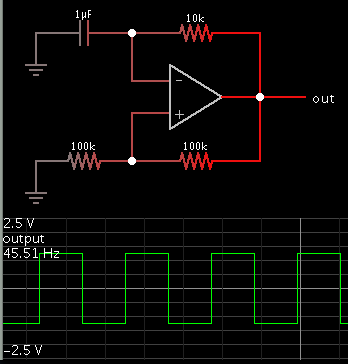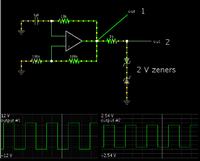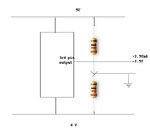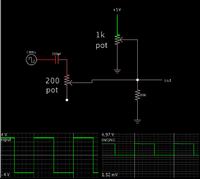Elex-factor
Junior Member level 1

- Joined
- Jul 12, 2011
- Messages
- 18
- Helped
- 0
- Reputation
- 0
- Reaction score
- 0
- Trophy points
- 1,281
- Location
- Seoul, Korea
- Activity points
- 1,445
Hi
I am using a timer 555 ic to generate a square wave with a peak to peak voltage of 5 V. The square wave that i obtained has a peak to peak voltage range between 0 V and 5 V. However, I need a dual polarity square wave from -2.5 V to +2.5 V. How can I achieve that and what circuit should I add with the 555 ic? Please guide me on the right path.
I am using a timer 555 ic to generate a square wave with a peak to peak voltage of 5 V. The square wave that i obtained has a peak to peak voltage range between 0 V and 5 V. However, I need a dual polarity square wave from -2.5 V to +2.5 V. How can I achieve that and what circuit should I add with the 555 ic? Please guide me on the right path.















